The spike in Google searches for “dry beans” in mid-March confirms what we all saw when we went to the grocery stores to stock up at the start of the lockdowns: dried beans were among the first staples to sell out in the initial COVID buying panic, and among the last to restock when things settled down. It seems that everyone knows dry beans are an essential component of your preparedness pantry, but very few seem to be aware that they’re a lot harder to cook properly than the canned beans we’re all used to. If you planned to just throw them in a pot of boiling water, prepare for disappointment.
Prime Day Deals Alert!: By far the best method for cooking dried beans is the Instant Pot, and Amazon is currently running major Prime Day discounts on two models: the three-quart Instant Pot Ultra (58% off) and the ten-quart Instant Pot Duo Nova (33% off). Grab them fast!
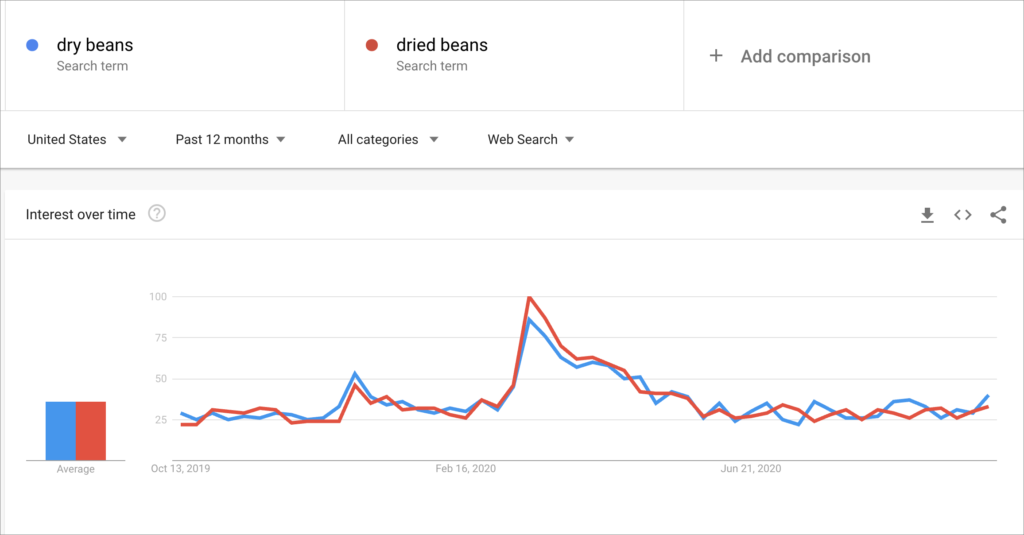
As a certified Southern boy, I have eaten and cooked my fair share of beans. I’ve put together some cooking tips based on my own experience and research, along with some notes on my experiments in trying to reduce the cooking time.
Here are the basics:
- Soak your dry beans before you boil them for the best results.
- Soaking protocols and methods differ, but the “quick soak” method seems to work best.
- Beans take a long time to cook, no matter how long you soak them.
- An electric pressure cooker is the fastest and most efficient way to cook dry beans.
- Keep plenty of seasonings on hand to make your beans more fun to eat.
- Cooking instructions that apply to dry beans don’t necessarily apply to other legumes like lentils.
Dry bean cooking basics
There are a number of minor controversies around dry bean cooking — if and how long to pre-soak them, whether to boil them in the same water you pre-soaked them in, if and when to season them, etc. I’ll go into some of that back-and-forth in the sections below, but if you just want my quick take on the best way to get the job done, the core steps are as follows:
- Weigh out one pound of beans.
- Examine the beans for stones and bad beans.
- Rinse the beans.
- Put the beans in the cooking pot.
- Add enough water to cover the beans by two inches.
- Bring the beans to a boil, then turn the water off and cover.
- Let beans soak in the hot water for 90 minutes.
- Bring the beans back up to high heat.
- Once the beans start to boil, turn the heat down to medium-low.
- Gently simmer beans until fork tender, stirring regularly.
Those last three steps were written with a standard stove-top pot in mind, but if you’re using an electric cooker (my preferred method) then they’ll be slightly different. More on that below, though.
Selecting and preparing the beans for cooking
There are many different kinds of beans. I almost always cook pinto beans, but other types of dry, hard beans, like navy beans and black beans, are about the same. (However, what applies to dry beans doesn’t necessarily apply to other legumes like lentils.)
First, how many beans do you need? I like to measure them by weight with a kitchen scale, and I usually cook one pound at a time, which is enough for a week’s worth of meals or a large family dinner.
Next, you should look through your beans and remove any rocks, split beans, and misshapen beans. For years I thought this was a waste of time because I had never found a rock, but low and behold, just as I was cooking a pot of beans for this article, I found some.
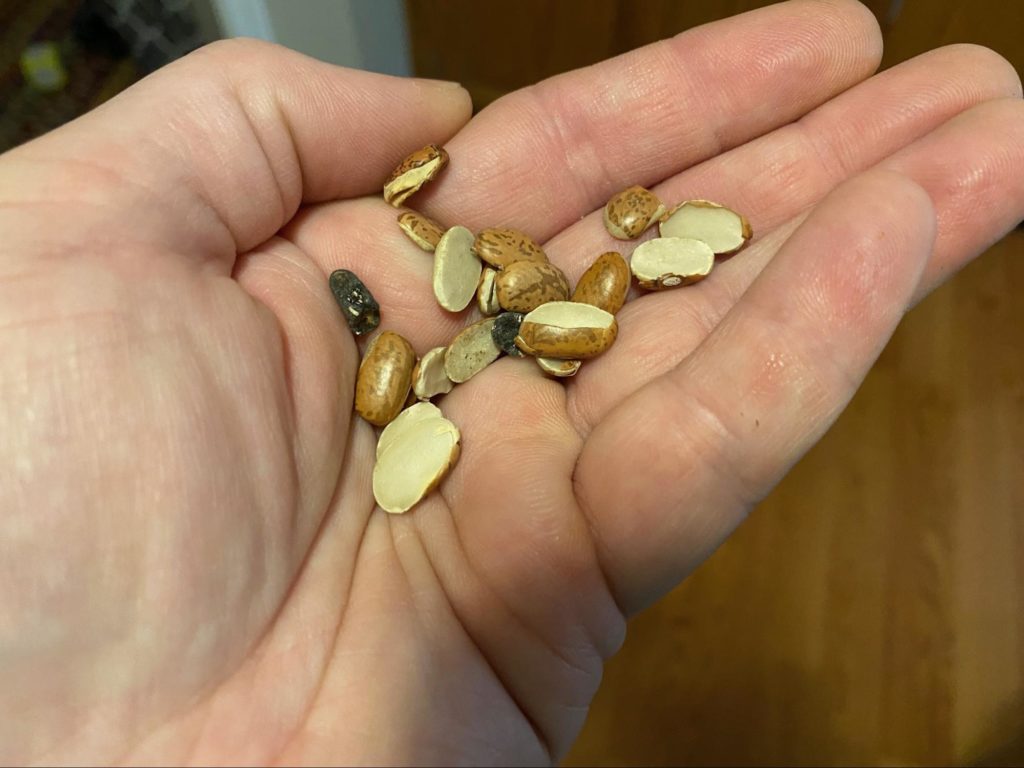
After you pick out any nasties, put the beans in a colander and give them a rinse to cleanse them of any dirt.
Soaking dried beans
Soaking beans in water before cooking them, at least in theory, reduces cooking time, reduces the enzymes that cause flatulence, and makes the beans taste better. But there is vigorous debate over if or how much soaking is necessary.
There are three main schools of thought on this:
- Cook the beans without soaking
- Soak the beans in cold water overnight
- Do a “quick soak,” where you put the beans in water, briefly boil them, and let them sit in the hot water for an hour or two
I’ve tried all three methods multiple times, and in my opinion, the quick soak will give you the best results. The long soak doesn’t dramatically improve the beans, and no soak tends to give me darker, drier, and overcooked beans. The quick soak is not only faster but produces a creamier bean. I’m not alone in that opinion. Epicurious said of quick-soaking: “We tried this method, and although the cooking time didn’t vary much (the quick-soaked beans cooked just 5 minutes faster than the overnight soaked ones and 15 minutes faster than the no-soak beans), the flavor was our favorite of the bunch.”
You want to cover the beans in about two inches of water, turn the heat up to high until the water starts to boil, and then cut it off and let it sit for 90 minutes. If you’re short on electricity or time, the soak isn’t strictly necessary.
(If I’m cooking in an Instant Pot, I do the quick soak in the Instant Pot’s inner pot, which prevents me from needlessly dirtying a pot.)
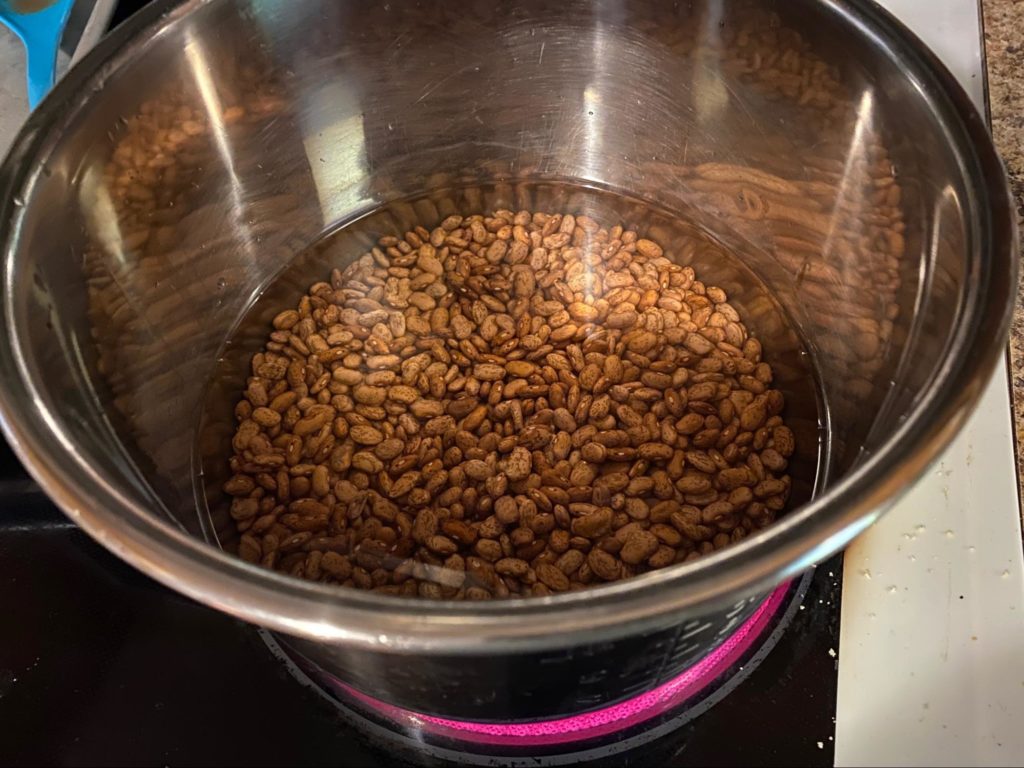
Now here comes the next debate: to keep the soaking water, or drain the beans and add fresh? I personally have been draining, but not rinsing the beans after the quick soak, but Epicurious said they got better results by keeping the soaking water, so I’ll try that from now on.
Seasoning the beans
Finally, there is plenty of debate over whether to season the beans at the start or the end. I personally don’t season them during cooking, so I can make things like pinto bean fudge. But if I’m just going to eat the beans as they are, I like to throw in a slice of country ham before I cook them, which adds a great deal of flavor. You can use any other kind of salty, smoked meat, like bacon, or smoked turkey if you don’t eat pork. Otherwise, I usually just season them when I serve them.
The traditional white, Southern way to season beans is “not at all,” other than maybe the seasoning meat, though many will serve them with cornbread and/or diced raw onion. I personally find that beans, especially pintos, kind of taste like dirt and benefit greatly from seasoning. Salt them like potatoes. I like a Mexican sort of flavor profile, so I add salt, pepper, cumin, garlic powder, and chili powder.
Cooking beans in the Instant Pot
I almost never cook beans on the stove since I discovered the Instant Pot. In case you’ve been sleeping under a rock the past few years, the Instant Pot is an electric pressure cooker that’s much easier to use than traditional pressure cookers, and it can keep your food warm for hours.
I’ll first quick soak the beans in the inner pot. Then I put the inner pot in the Instant Pot and cook on high pressure for 90 minutes, which is a much shorter cooking time than I usually experience on the stove. I don’t have to stir, the beans won’t burn, and the Instant Pot will keep the beans warm until I’m ready to eat. I find that it’s vastly superior to cooking beans in a pot.
As for cooking beans in a grid-down situation, I’ve evaluated a lot of bean-cooking methods, both from a culinary and preparedness standpoint, and I believe that an Instant Pot connected to a generator is hands-down the best option if you can swing it. It’s faster and uses less fuel, and just all-around easier to manage at a time when you have a lot more to worry about than tending a pot of beans.
But you’ll need a beefy generator to make this work: a six-quart Instant Pot draws 1,000 watts, which is too much for most battery-powered “solar generators.” Many RVers like the 3-quart model, which only draws 700 watts.
If you can power an Instant Pot, you’ll only use 1-1.5 kilowatt-hours of juice. You can also cook pinto beans in a slow cooker, but it’s not nearly as efficient. A slow cooker takes 8-9 hours to cook the beans, with the typical slow cooker drawing about 250 watts. You’ll end up using over 2 kilowatt-hours, much more than what the Instant Pot would draw.
If you don’t or can’t use the Instant Pot, then going the more traditional water-in-a-pot-based route is going to require more time and care.
Cooking beans in a pot
What if there’s no way to power an Instant Pot and you have to do things the old fashioned way? As long as you have all the fuel, water, and equipment you need, cooking dry beans is not difficult, and is mostly about patience and paying attention.
After you’ve soaked your beans, put them in a pot (assuming they’re not already in the pot), add enough water to cover them by about two inches, turn the heat up to high until the water starts to boil, and then turn the heat down to a gentle simmer. Cooking usually takes anywhere from one to three hours, so plan accordingly. Stir regularly so the beans don’t stick to the pot, add water if they get too dry, and cook them until they are fork-tender.
So what are your grid-down options for cooking beans in a pot? Here are a few ideas:
- Propane and propane accessories. If you have a propane grill or a burner (or a propane grill with a burner), just cook a pot of beans on that, though your propane may not last long.
- Grill ‘em. If you have a charcoal grill, put your beans in a suitable pot and throw them on the grill. If you’re short on charcoal, you could even use wood in the grill.
- Solar oven. Solar ovens can cook purely through the power of the sun, even on cold days, using no fuel at all. They cook similarly to crock pots, so I figured solar ovens like the All-American Sun Oven would work for beans. It turns out that they do!
- Cook like a cowboy. Build a fire and put a cast-iron dutch oven over top. It seems the usual method involves hanging the pot over the fire with a tripod (time for me to fire up the forge and get to smithing!).
More: Best tinder for survival fires
Postscript: can you shorten the cooking time by soaking?
I set out to see if extreme soaking could shorten the cooking time. Believe it or not, there’s been scientific research on bean cooking times. A study published in the Journal of Polytechnic found that beans that were soaked, dried at about 80C (176F), and then soaked again cooked about an hour faster. But our goal is reducing fuel usage, so that’s no good.
I decided to do a bit of my own experimentation. I took one cup of beans and soaked them in a mason jar.
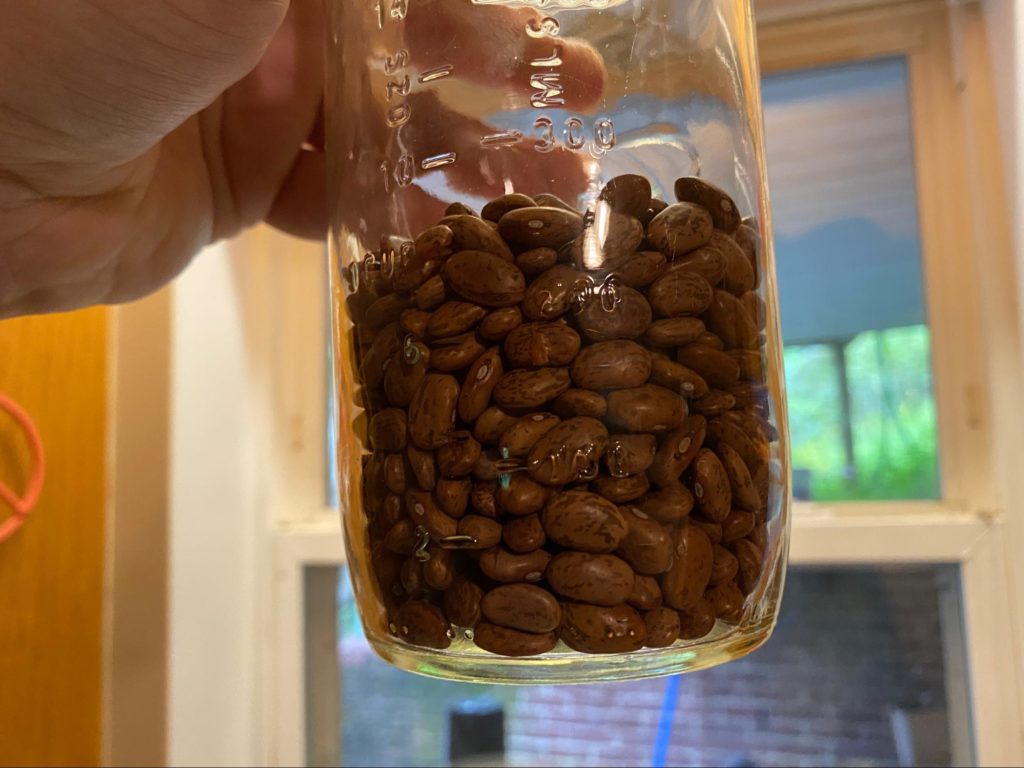
After four entire days of soaking, the beans had expanded to fill the jar.
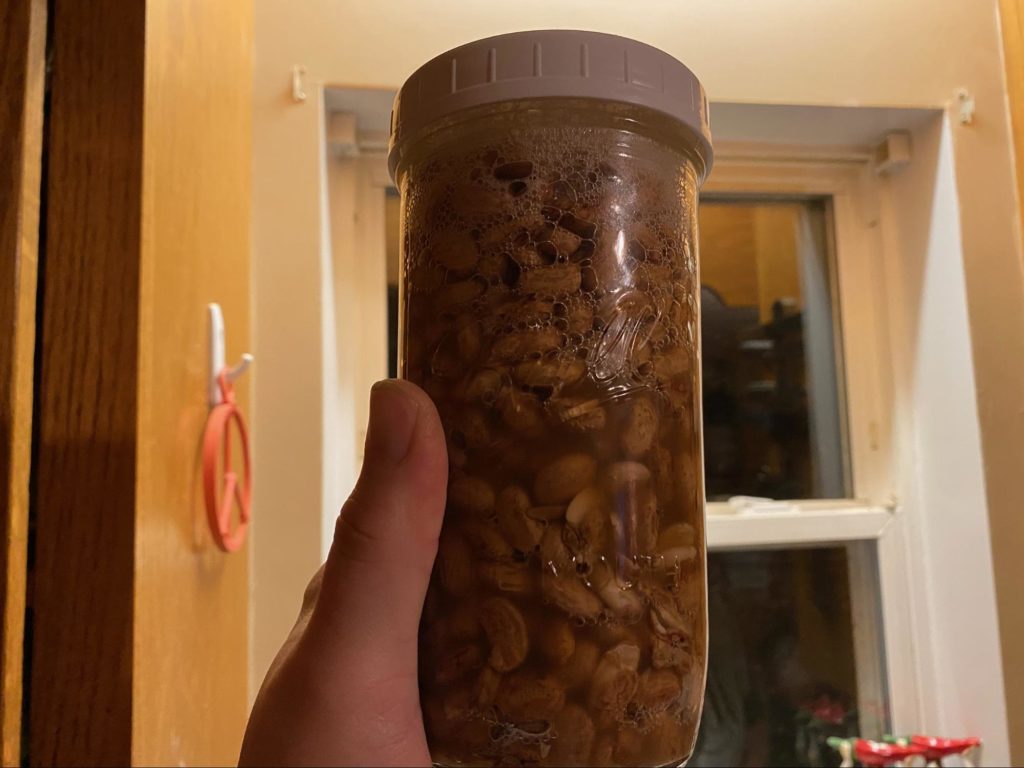
And the beans were so soft that I could break them with my fingers. Surely they would cook faster!
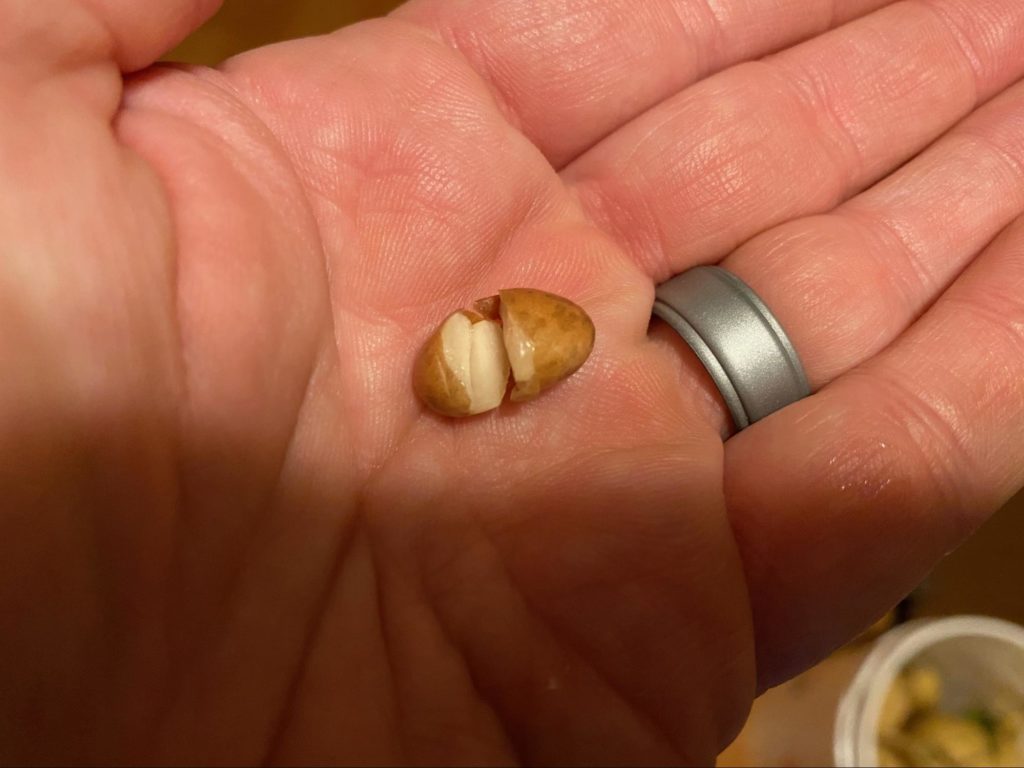
Alas, no. It took a full hour of boiling for the beans to even approach edible, and even then they were a tad crunchy.
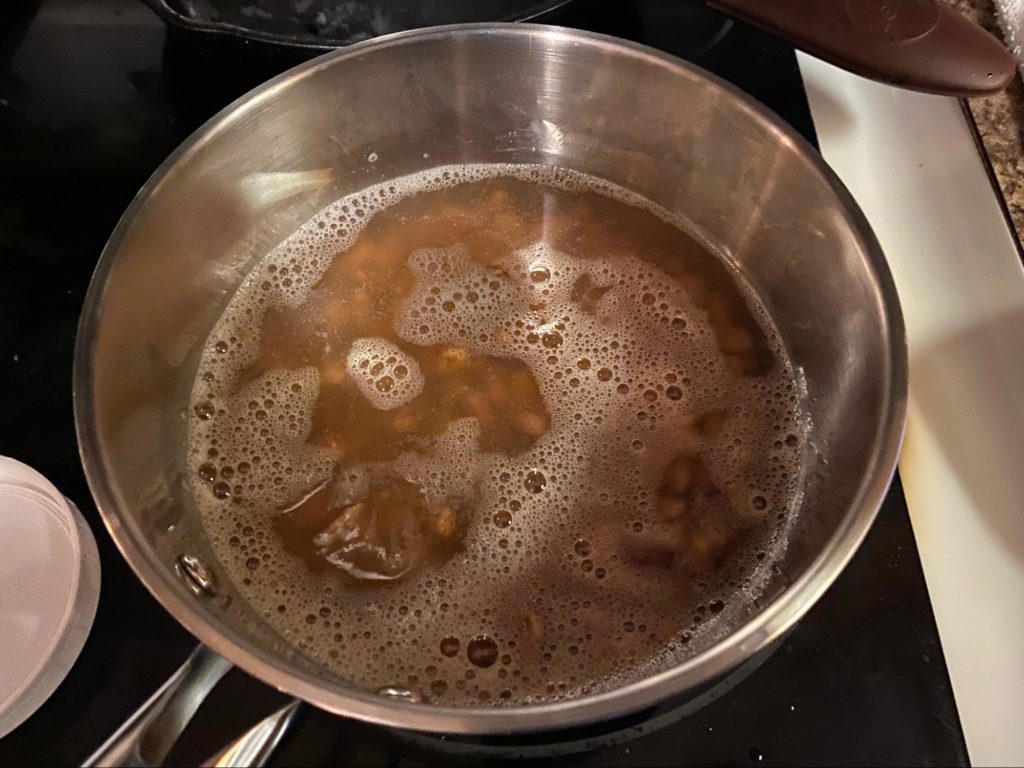
In a grid-down scenario, don’t bother soaking your beans. It just takes more fuel and doesn’t substantially improve cooking time.
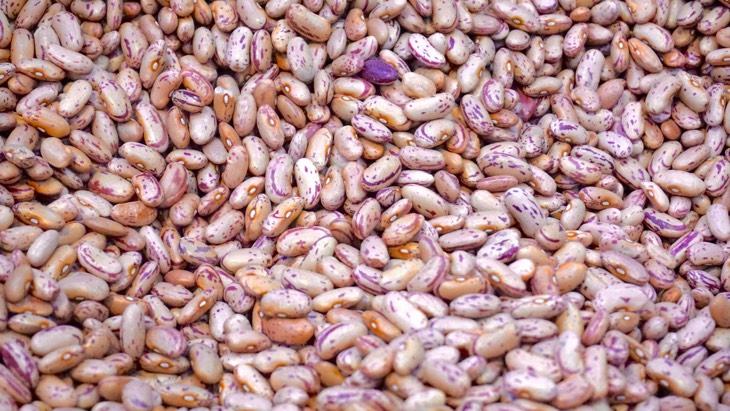
You are reporting the comment """ by on